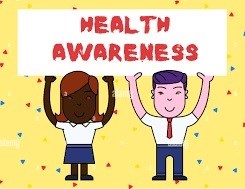
Ethiopian Epiphany or Timket Festival is an annual outdoor celebration by followers of the Ethiopian Orthodox Church. The feast which usually sets on January 19 is held to commemorate the baptism of Jesus Christ by John the Baptist in Jordan Riveras narrated in the bible. On the eve of the festival or ketera, Orthodox Christians, choirs, deacons, and priests carrying Tabots, models of the Ark of the covenant, in each church in the country are taken to their nearby rivers.
They parade through the streets and highways to the nearby rivers in the city. To the crowded conditions, add the holy, ceremonial laying-down of rugs upon which the priests will step as they carry the Tabots. The priests will be wearing their professional clothes. People participate in the feast wearing their stylish clothes mostly traditional.
The choirs singing songs, the priests and deacons making the ritual ceremony in their religious cloth makes the celebration ‘the Ethiopia’s most colorful holiday of the year’, explained the Gezahegn. According to the anthropologist, Ethiopian Epiphany is a legendary celebration that traces back its origin to the introduction of Christianity into the land in the 4th century A.D.
However, different generations have been adding their own creativity to the celebrationin some forms. For instance, Atse Gebremeskel ordered the celebration to be made near a river out of the church’s temple and King Lalibela has allowed the celebration to be made together by joining different Tabots at one place.
It is one of the best stages whereby we observe different cultural beauty of the nations, nationalities and peoples of Ethiopia. Gezahegn mentioned that youths start preparing themselves and the necessary materials for the celebration of the holiday a week or more ahead. They clean and decorate their surroundings. They hang a long chain of flags of their country along the streets.
They post different pictures and biblical scriptures that could best explain the what of the holiday. They buy clothes and other traditional dresses that would make them look typical Ethiopian. The people from the country as well as tourists will gather in Addis Ababa, Gonder, Lalibela, Axum, and many other rural countries to see the pageant carrying the Tabots.
Jan Meda is the renowned place where most of the Tabots in Addis Ababa meet. Thousands of Ethiopians and tourists will come to this place tocelebrate the festivity, disclosed the authority. The Fasilades’ Bath is the place where Timketis celebrated in Gonder, pointed out Gezahegn. Timketis accompanied not only with worship services, but also with spectacular carnival, where according to the Ethiopian tradition, the man can find his special someone.
It is a place where single youth look for their soulmate. Young boys and girls work hard to present the best version of their own to their potential lover.Girls wear clothes that could best display their beauty. Netela, a gauzy cotton white scarf withsplash of color pattern along the ends, is common among girls, he added. According to some of the elders of Addis Ababa, menthrow lemon in order to spot the one who is supposed to be their soulmate from the ladies in the crowd.
A young boy throws lemon to hit his soulmate from the crowd and believes the lady to be hit by the lemon is his future wife.The young sters will be singing and dancing at the celebration. The youngsters will present various striking traditional dances by being in groups. The Ethiopian Authority for Research and Conservation of Cultural Heritages (ARCCH) confirmed Timket Festival has not only religious worth, but also plays tremendous social and cultural values. It is one of the events which promote peace and tolerance.
It also plays irreplaceable role in economic development of the country and promoting the country’s social and cultural values worldwide. Gezahegn Girma, Cultural Anthropologist at the ARCCH says Ethiopian Epiphany is among the biggest holidays in the Ethiopian Orthodox Church.
And the authority hopes the holiday is likely to be registered as one of the world’s cultural heritages by United Nations Educational, Scientific and Cultural Organization(UNESCO) by the next year. The Authority has submitted the request with the necessary requirements to the UNESCO to register Timket as one of the heritage. If the request by the authority is approved, the first intangible cultural heritage will be added to the other cultural and natural sites of Ethiopia which are already registered by UNESCO, according to the anthropologist.
Herald January 19/2019
BY GETAHUN LEGESSE





